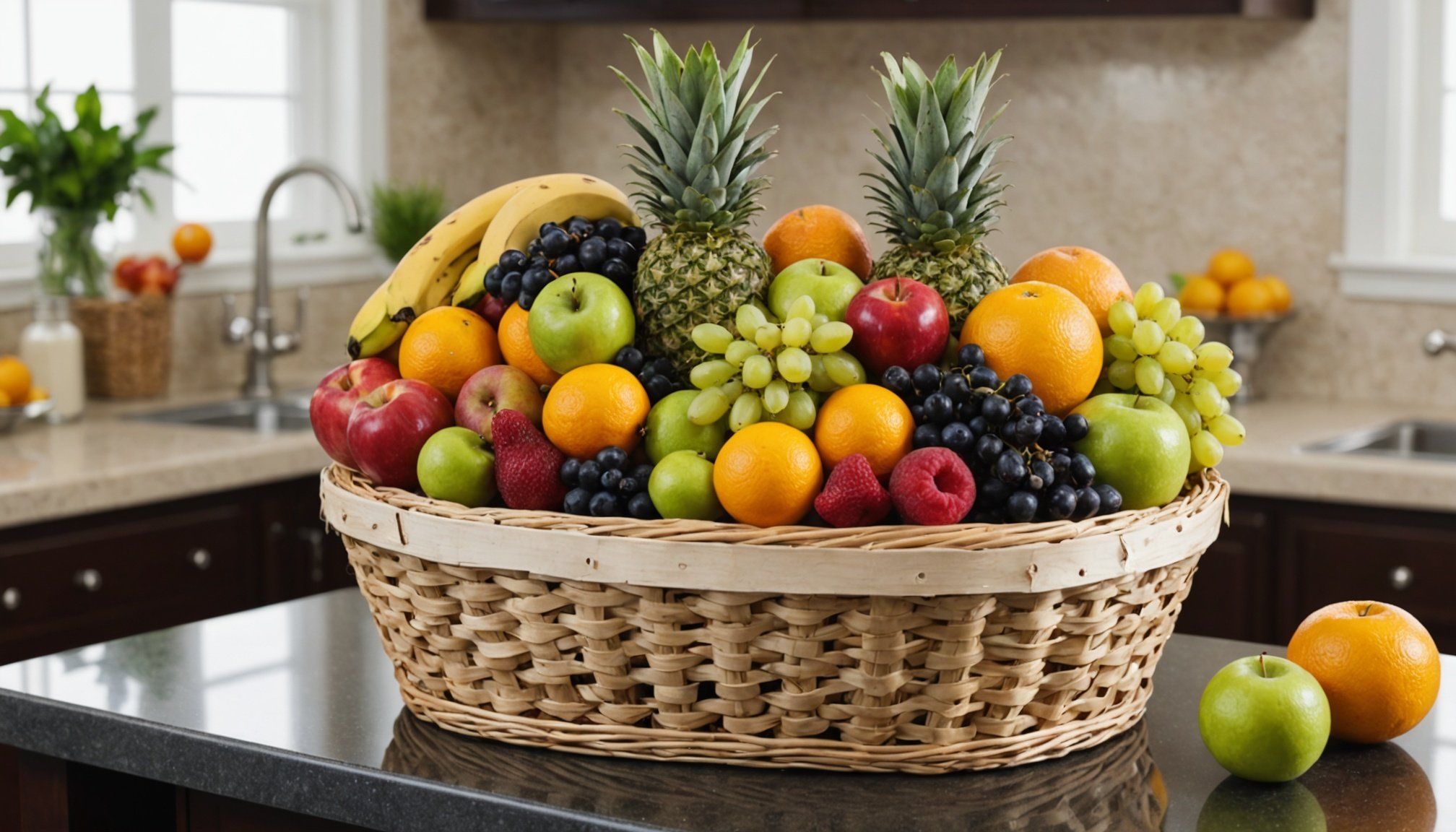Health Benefits of Fruits
Daily fruit consumption plays a fundamental role in maintaining good health. Nutrients in fruits, such as vitamins, minerals, fiber, and antioxidants, are essential to the body’s overall well-being. Each type of fruit offers a unique blend of nutrients, supporting various bodily functions. For example, oranges are rich in Vitamin C, vital for a healthy immune system, while bananas provide potassium, which is crucial for heart health.
Numerous studies indicate a correlation between increased fruit intake and a decreased risk of chronic diseases, such as heart disease, stroke, and some cancers. Fruits’ natural compounds help combat oxidative stress and inflammation. Dietary fiber, abundant in fruits, further aids digestive health and can reduce the risk of type 2 diabetes by stabilizing blood sugar levels.
Also read : Seamless Access: Cutting-Edge Overhead Cabinets for Your Smart, Health-Conscious Kitchen
Antioxidants in fruits, including flavonoids and carotenoids, guard against cellular damage, contributing to long-term health benefits. Incorporating a variety of fruits into your diet not only enhances nutrient intake but also supports a diverse gut microbiome, which is pivotal for immune function and mental health. Thus, prioritising fruits as part of a balanced diet can lead to improved health outcomes and increased vitality.
Choosing the Right Fruits
Selecting the right fruits for your basket is crucial for maximizing health benefits. Opt for seasonal fruits as they offer better taste and are more cost-effective. Seasonal fruits are not only fresh but generally require fewer preservatives, ensuring higher nutrient retention.
Also to discover : Transform your kitchen with a yogurt maker: enjoy guilt-free indulgence and health benefits!
When choosing nutritious fruits, consider their ripeness. A ripe fruit is at its peak flavor and nutrient content. For example, a ripe banana will have more beta-carotene compared to an underripe one. To determine ripeness, look for vibrant colors and a firm texture, yet slightly yielding under gentle pressure.
Proper storage is essential to preserve the quality and nutrients of fruits. Store fruits like apples and berries in the refrigerator to prolong their shelf life. In contrast, bananas and avocados are best at room temperature until ripe. Keeping fruits separated can also prevent faster spoilage due to the emission of ethylene gas by some fruits, like apples and bananas.
Incorporating these strategies ensures you consistently enjoy fresh, flavorful, and nutritious fruits, contributing positively to your health. Prioritizing the right fruits can seamlessly enhance your daily diet and bolster your well-being.
Arranging a Multi-layered Fruit Basket
Creating an eye-catching fruit basket arrangement can be a fun activity that enhances both your kitchen’s aesthetics and your dietary habits. Start with multi-layered baskets, which not only maximise space but also add visual interest. Think of vertical arrangements; they make better use of counter space and allow easy access to each fruit layer.
For the bottom layer, select sturdier fruits like apples and oranges. These provide a solid base and can handle the weight of lighter fruits. Mid-layers could feature bananas and kiwis, while the top tier is perfect for more delicate fruits like berries or grapes. Not only does this preserve freshness and reduce spoilage, but it also creates an enticing display.
An attractively arranged fruit basket encourages family members, including kids, to reach for a healthy snack more often. By making fruits visibly accessible and appealing, you will likely boost fruit consumption significantly within your household. Consider rotating the fruits weekly to maintain interest and ensure a constant supply of fresh and nutritious options.
Increasing Daily Fruit Intake
Boosting fruit consumption can be both enjoyable and practical with the right strategies. Start by placing a vibrant fruit bowl in plain sight within the kitchen or dining area. This serves as a visual reminder and encourages frequent snacking on healthy options. Incorporate fruits into meals by adding berries to your breakfast cereal or blending a banana into your morning smoothie for a nutritious start.
For snacking, prepare fruit-based options like apple slices with peanut butter or yogurt with mixed berries throughout the day. These not only provide essential nutrients but also satisfy cravings for sweetness in a healthy manner. Including fruits in your lunch or dinner can be as simple as adding sliced oranges to a salad or grilling pineapple with meats.
Combining fruits with other foods can help you achieve a balanced nutrition. Pairing fruits with protein-rich foods, such as cheese or nuts, not only elevates the flavour but also provides better satiety. Experiment with different fruit pairings to enhance your meals and ensure you receive a variety of nutrients. Embracing these practical tips can significantly improve your daily fruit intake while promoting better overall health.
Aesthetic and Organizational Advantages of Fruit Baskets
Using a multi-layered fruit basket serves both as a decorative and practical element in your kitchen. It enhances kitchen organization by keeping fresh produce neatly displayed, which can also help reduce waste by making it easier to monitor the fruit’s ripeness. The arrangement allows you to spot and consume fruits before they spoil, increasing their usage and minimizing wastage.
Visually appealing fruit baskets can positively influence eating habits. The presence of an attractively arranged fruit basket in the kitchen acts as a continuous reminder to incorporate fruits into daily consumption. This boosts healthy eating habits, as seeing fruits regularly prompts individuals to choose them over less healthy snacks.
Moreover, integrating a fruit basket into aesthetic kitchen decor updates the overall look, adding a pop of colour and natural charm to the space. Strategically placing fruit baskets not only contributes to a more organised kitchen but also promotes a healthier lifestyle by encouraging more frequent fruit consumption. It’s a simple yet effective way to make nutritious choices more accessible and enticing.
Recipes and Serving Suggestions
When it comes to fruit recipes, simplicity and healthiness should be your main focus. Start with a classic fruit salad, incorporating a variety of fresh fruits like apples, strawberries, and grapes to enjoy a burst of flavors. Adding a sprinkle of lemon juice can act as a natural preservative while enhancing the natural sweetness.
For unique serving ideas, try layering fruit parfaits. Use alternating layers of yogurt, granola, and sliced fruits such as kiwi and blueberries. This not only creates a visually appealing dish but also provides a nutritious option rich in fiber and protein.
Experiment with creative fruit dishes such as grilled peaches or pineapple skewers for a delightful twist at your next barbecue. These can be served with a drizzle of honey or as a delicious topping over ice cream, offering a mix of warm and cold textures.
Consider vibrant fruit platters for gatherings, arranging sliced fruits like mangoes, watermelon, and pomegranates. These not only cater to diverse tastes but also ensure guests have healthy snack choices. Using fruits in varied ways enriches both the palate and nutrition, giving everyone something enjoyable and beneficial to relish.











